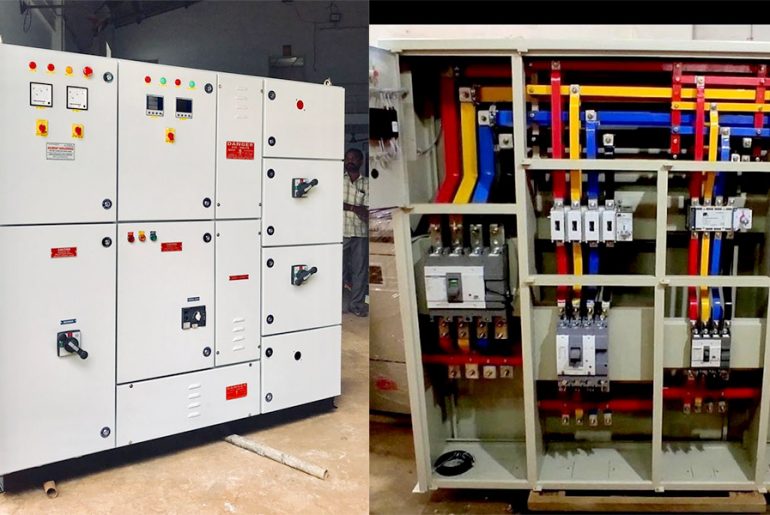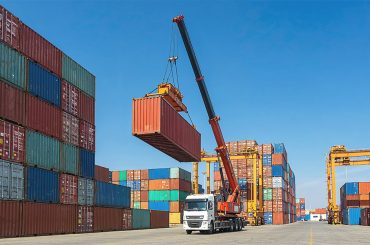Power outages can disrupt operations and cause significant losses for businesses and critical facilities. Two essential systems help maintain continuous power supply during mains electricity failures: Auto Mains Failure (AMF) panels and Automatic Transfer Switch (ATS) panels. While both serve the purpose of providing backup power, they operate differently and suit various applications.
What is an Auto Mains Failure (AMF) Panel?
An Auto Mains Failure panel monitors the incoming mains power supply and automatically starts a backup generator when power interruption occurs. The AMF system continuously checks voltage levels, frequency, and phase sequence of the main electrical supply. When these parameters fall outside acceptable limits, the controller triggers the generator to start and switches the load to backup power.
AMF panels feature advanced microprocessor-based controllers that can detect multiple fault conditions including under-voltage, over-voltage, phase failure, and frequency variations. Modern AMF systems provide real-time monitoring, data logging, and remote communication capabilities for enhanced power management.
Key Components of AMF Systems
AMF panels contain several critical components working together to ensure seamless power transfer. The main controller unit processes input signals and makes switching decisions based on programmed parameters. Voltage and current transformers measure electrical parameters accurately. Control relays handle the switching operations between mains and generator power.
Protection devices like circuit breakers and contactors safeguard equipment from electrical faults. Display units show system status, alarms, and operational data. Communication modules enable remote monitoring and control through various protocols.
Understanding Automatic Transfer Switch (ATS) Panels
An Automatic Transfer Switch panel focuses primarily on switching electrical loads between two power sources – typically mains supply and generator power. ATS systems excel at fast, reliable switching operations but rely on external signals or manual commands to initiate the transfer process.
ATS panels come in two main configurations: open transition and closed transition types. Open transition switches create a brief interruption during transfer, while closed transition switches maintain continuous power flow. The selection depends on load requirements and acceptable downtime levels.
ATS Panel Components and Operation
ATS panels contain robust switching mechanisms designed for frequent operation cycles. Heavy-duty contactors or circuit breakers handle the actual power transfer. Control circuits process switching commands from external sources or manual inputs. Interlocking mechanisms prevent simultaneous connection to both power sources.
Monitoring systems track switch positions and provide feedback to connected equipment. Some ATS panels include basic voltage sensing capabilities, though they typically require external control signals for operation.
Core Functional Differences
The primary distinction between AMF and ATS systems lies in their level of automation and intelligence. AMF panels provide complete autonomous operation, continuously monitoring power quality and making independent decisions about generator starting and load transfer. ATS panels focus on reliable switching but depend on external control systems for decision-making.
| Feature | AMF Panel | ATS Panel |
| Automation Level | Fully autonomous | Requires external control |
| Generator Control | Integrated start/stop functions | Separate control unit needed |
| Power Monitoring | Continuous voltage/frequency monitoring | Basic switching status only |
| Decision Making | Independent fault detection | External signal dependent |
| Engine Management | Oil pressure, temperature monitoring | No engine parameter control |
| Response Time | Immediate (typically 10-15 seconds) | Depends on external controller |
AMF systems incorporate generator control functions including automatic starting, warm-up delays, and shutdown sequences. They manage engine parameters like oil pressure, coolant temperature, and fuel levels. ATS panels typically lack these generator management capabilities and require separate engine control units.
Control and Monitoring Capabilities
AMF panels offer comprehensive monitoring and control features through integrated microprocessor units. They display real-time electrical parameters, generator status, and system alarms. Advanced AMF controllers provide data logging, trend analysis, and predictive maintenance alerts. Remote communication options include Modbus, RS485, and Ethernet protocols.
| Monitoring Features | AMF Panel | ATS Panel |
| Real-time Parameters | Voltage, current, frequency, power factor | Switch position, basic status |
| Data Logging | Historical data storage and analysis | Limited or no data logging |
| Alarm Systems | Comprehensive fault detection | Basic transfer alarms only |
| Remote Communication | Modbus, Ethernet, RS485 | Basic or optional |
| Display Type | Digital LCD with multiple screens | Simple LED indicators |
| Predictive Analysis | Trend analysis and maintenance alerts | Not available |
ATS panels traditionally offer basic status indication and manual control options. Modern ATS systems may include digital displays and communication capabilities, but these features are generally less sophisticated than AMF solutions. The monitoring focus remains on switch position and transfer status rather than comprehensive power analysis.
Installation and Wiring Requirements
AMF panel installations require more complex wiring connections due to their integrated control functions. Technicians must connect mains supply sensing, generator control cables, and various monitoring inputs. The wiring includes start/stop signals, alarm inputs, and communication lines to the generator control panel.
ATS panel installations focus primarily on power switching connections. The wiring includes main supply inputs, generator supply inputs, and load outputs. Control wiring is typically simpler, involving transfer command signals and status feedback connections.
Application Scenarios and Selection Criteria
AMF panels suit applications requiring fully autonomous backup power operation. Hospitals, data centers, telecommunications facilities, and unmanned installations benefit from AMF systems’ complete automation capabilities. These environments cannot tolerate delays in power restoration and require immediate generator response to mains failures.
| Application Type | Recommended Solution | Key Requirements |
| Hospitals | AMF Panel | 24/7 autonomous operation, immediate response |
| Data Centers | AMF Panel | Continuous monitoring, zero downtime tolerance |
| Telecommunications | AMF Panel | Remote operation, automatic fault detection |
| Manufacturing Plants | ATS Panel | Integration with existing control systems |
| Commercial Buildings | ATS Panel | Manual oversight, cost-effective switching |
| Residential Complexes | AMF Panel | Minimal maintenance, user-friendly operation |
ATS panels work well when external control systems manage power switching decisions. Industrial facilities with existing power management systems, buildings with manual generator operation, and applications requiring custom switching logic often prefer ATS solutions. The dedicated switching function provides reliability without additional complexity.
Cost Considerations and Maintenance
AMF panels typically require higher initial investment due to their integrated control and monitoring capabilities. The comprehensive functionality reduces the need for separate control equipment, potentially offsetting the higher cost. Maintenance requirements include regular calibration of monitoring circuits and software updates.
| Cost Factors | AMF Panel | ATS Panel |
| Initial Investment | $2,500 – $8,000+ | $800 – $3,500+ |
| Installation Complexity | High (specialized technicians) | Medium (standard electrical) |
| Additional Equipment Needed | Minimal (integrated functions) | Generator controller required |
| Maintenance Frequency | Quarterly calibration checks | Semi-annual mechanical service |
| Software Updates | Regular updates required | Minimal or none |
| Total Cost of Ownership | Higher upfront, lower operational | Lower upfront, higher operational |
ATS panels generally offer lower initial costs, focusing resources on robust switching mechanisms. Maintenance centers on mechanical components and contact systems. The simpler design often results in longer service intervals and reduced maintenance complexity.
Reliability and Performance Comparison
Both systems provide high reliability when properly installed and maintained. AMF panels offer advantages in response time and automated operation but introduce additional complexity that could affect reliability. ATS panels provide proven switching performance with fewer potential failure points.
Performance characteristics vary based on specific applications and requirements. AMF systems excel in autonomous operation and comprehensive monitoring. ATS panels deliver superior switching speed and mechanical durability under frequent operation cycles.
Conclusion
Choosing between Auto Mains Failure and Automatic Transfer Switch panels depends on specific application requirements, automation needs, and budget considerations. AMF panels provide comprehensive, autonomous power management suitable for critical facilities requiring immediate response to power outages. ATS panels offer reliable switching performance for applications with existing control systems or manual operation preferences.
Understanding these key differences enables informed decisions about backup power system design. Both technologies contribute to power reliability and operational continuity when properly selected and implemented for their intended applications.






